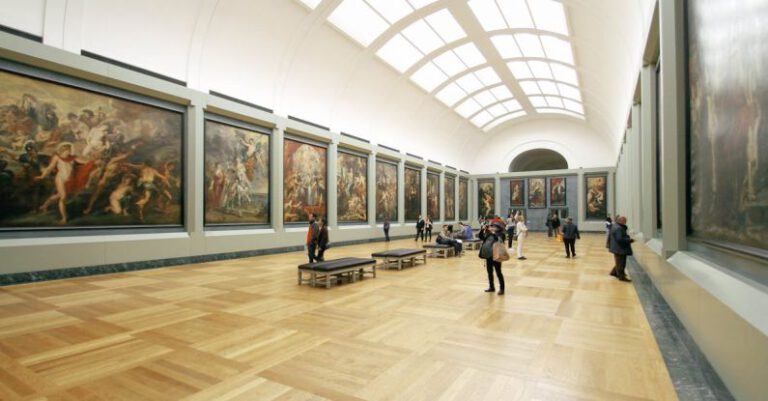
Museums have long been regarded as treasure troves of human history, culture, and creativity. Within their walls, some exhibits have gained iconic status, captivating visitors from around the world with their significance and beauty. Here, we explore some of the most famous museum exhibits of all time that have left an indelible mark on the art and history world.
The Mona Lisa – Louvre Museum, Paris
One cannot discuss famous museum exhibits without mentioning the enigmatic smile of the Mona Lisa. Housed in the Louvre Museum in Paris, Leonardo da Vinci’s masterpiece is arguably the most recognized painting in the world. The painting’s allure lies not only in its technical brilliance but also in the mystery surrounding the identity of the subject and the artist’s skillful use of light and shadow. The Mona Lisa continues to draw millions of visitors each year, all eager to catch a glimpse of her enigmatic gaze.
The Rosetta Stone – British Museum, London
The Rosetta Stone, housed in the British Museum in London, holds a special place in the history of deciphering ancient languages. Dating back to 196 BC, this inscribed stone played a pivotal role in unlocking the secrets of Egyptian hieroglyphics. The Rosetta Stone’s trilingual inscription, in Ancient Egyptian hieroglyphs, Demotic script, and Greek, provided the key to understanding the ancient language and has since become a symbol of decipherment and communication across cultures.
The Starry Night – Museum of Modern Art, New York
Vincent van Gogh’s “The Starry Night” is a mesmerizing depiction of the night sky over the village of Saint-Rémy-de-Provence. Housed in the Museum of Modern Art in New York, this iconic painting is celebrated for its swirling brushstrokes, vibrant colors, and emotional depth. Van Gogh’s masterpiece continues to captivate art lovers with its evocative portrayal of the artist’s inner turmoil and his profound connection to nature and the cosmos.
The Terracotta Army – Emperor Qin Shi Huang’s Mausoleum Site Museum, China
Discovered in 1974 near Xi’an, China, the Terracotta Army is a vast collection of life-sized terracotta sculptures depicting the armies of Qin Shi Huang, the first Emperor of China. This archaeological marvel, housed in the Emperor Qin Shi Huang’s Mausoleum Site Museum, showcases the incredible craftsmanship and artistry of ancient Chinese artisans. The Terracotta Army stands as a testament to the power and grandeur of the Qin Dynasty and offers a glimpse into the military organization and cultural practices of ancient China.
The Hope Diamond – National Museum of Natural History, Washington, D.C.
The Hope Diamond, a stunning blue diamond weighing 45.52 carats, is one of the most famous gemstones in the world. Housed in the National Museum of Natural History in Washington, D.C., this legendary diamond has a storied history dating back centuries. Its deep blue hue, exceptional clarity, and mysterious curse have captured the imagination of generations, making it a must-see exhibit for visitors to the museum.
Conclusion: A Legacy of Artistic and Historical Significance
The most famous museum exhibits of all time serve as windows into the past, offering insights into the artistic achievements, cultural heritage, and historical events that have shaped our world. From iconic paintings and archaeological wonders to priceless gemstones and ancient artifacts, these exhibits continue to inspire wonder and fascination among visitors, reminding us of the enduring legacy of human creativity and ingenuity. Whether housed in renowned institutions like the Louvre, the British Museum, or the Museum of Modern Art, these treasures stand as testaments to the power of art and history to transcend time and connect us to our shared heritage.





